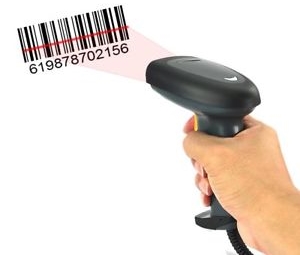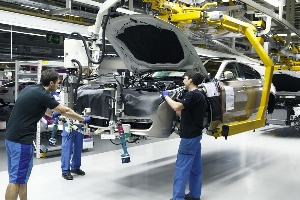QR codes vs 1D Barcodes
QR codes are similar to barcodes however there are some significant differences. While barcodes can only hold information horizontally, QR codes hold data vertically too. QR codes, therefore, are called2D codes since they carry data in both directions. The great advantage of this is that they can carry a lot more information within a much smaller space. In fact, QR codes are capable of carrying hundreds of times the data of conventional barcodes. Also, since QR codes can be read in a 360-degree circle interference is eliminated, and there are no negative effects experienced from the background.
Let’s take a closer look at 1D barcodes and QR codes to determine the uses and advantages of each.
What Are Barcodes?

Barcodes are 2D small codes which feature several spaces and bars. The sequence of spaces and bars is then read by a machine, with symbols and numbers being represented by the given sequence.
Basic barcodes have been in circulation since the mid-70s for retail applications. They may even have been around since the 1960s for industrial applications. Barcodes are capable of storing a range of text-based data like size, colour and types of products.
Typically used in scanning at the point of sale, a 1D barcode could be used to label raw materials andto manage inventories. The postal service uses them too as well as the shipping industry when tracking packages to ensure safe delivery. Barcodes are even used for managing filing systems and library books.
What Benefits Do 1D Barcodes Provide?
There are a few clear advantages to using a 1D barcode:
- They are cheap
- They enable accurate management of inventories
- They allow efficient, speedy operations
- They reduce manual labour costs
QR Codes – An Overview

Created in the mid-90s, Quick Response (QR) Codes were first designed for use in the automotive industry. They are 2D barcodes or matrix codes which are read by special machines and store details about the product or item.
QR codes store information both vertically and horizontally, and this allows them to store as many as 2.509 numbers or 1,520 alpha-numeric characters. This compares with only 43 at a maximum for standard barcodes.QR codes can hold data such as:
- Product details
- Names
- Email addresses
- URLs
- SMS messages
- Dates
- Geolocation data
When Are QR Codes Used?
As QR codes can be used for the storage of a vast array of information they can be used for several applications. Found on posters, marketing materials, museum exhibits, shop windows and business cards, they enable users to scan the code to access information or to visit websites.
Not only can QR codes be used for retail and marketing applications, but they can also be used to detail operation instructions and procedures, to document schematics, to submit maintenance requests and to store permit information.
QR codes are considered to be pretty secure as there are 3 different error-detection levels inbuilt into them. Today, most smartphones already have inbuilt QR scanning apps, so brands are able to quickly and easily share information and connect with the consumer.
Are There Any Readability Issues?
QR codes are believed to be simpler to scan when compared to a 1D barcode. This is because they are scannable in all directions while a 1D barcode must be scanned at a specified angle. However, 2D barcodes may also still suffer from problems connected to low contrast, inadequate quiet zones, inconsistencies in printing, distorted symbols and incorrect scanning distance.
Despite any potential problems, QR code use is on the rise and is proving to be exceptionally popular across a range of applications. From marketing to industrial use, they aren’t going anywhere soon!
See how to QR code compares to the Matrix Code.
Use Now
2025 (c) QR Me, All Rights Reserved Terms and Conditions | Privacy